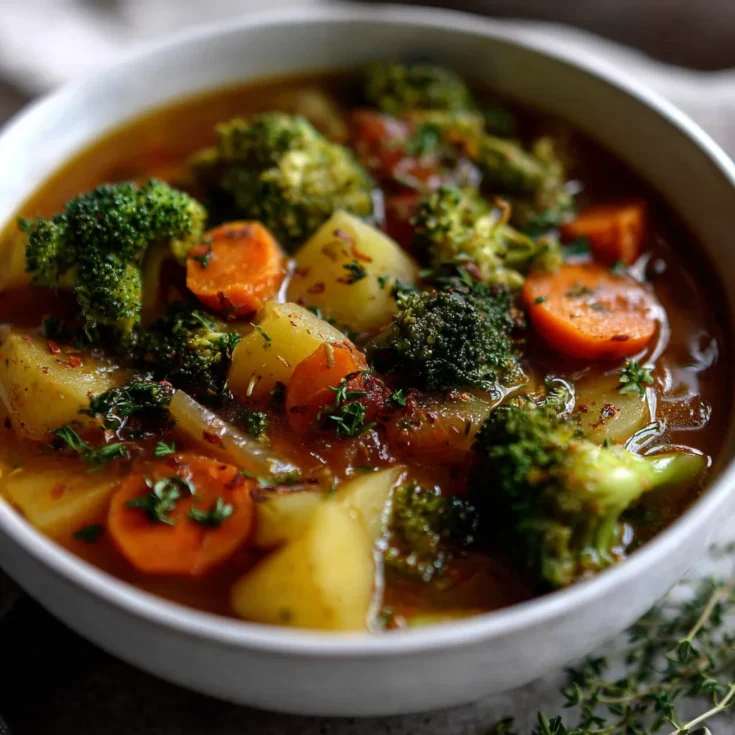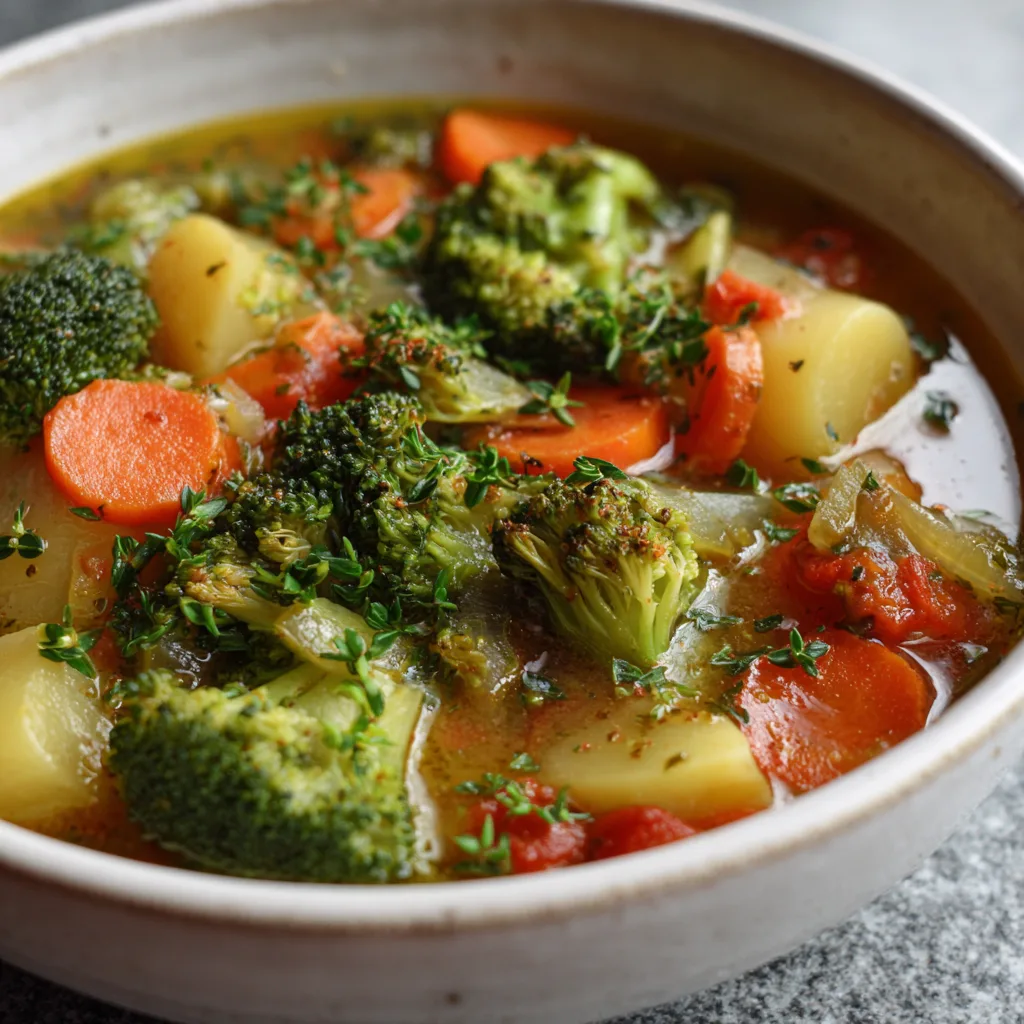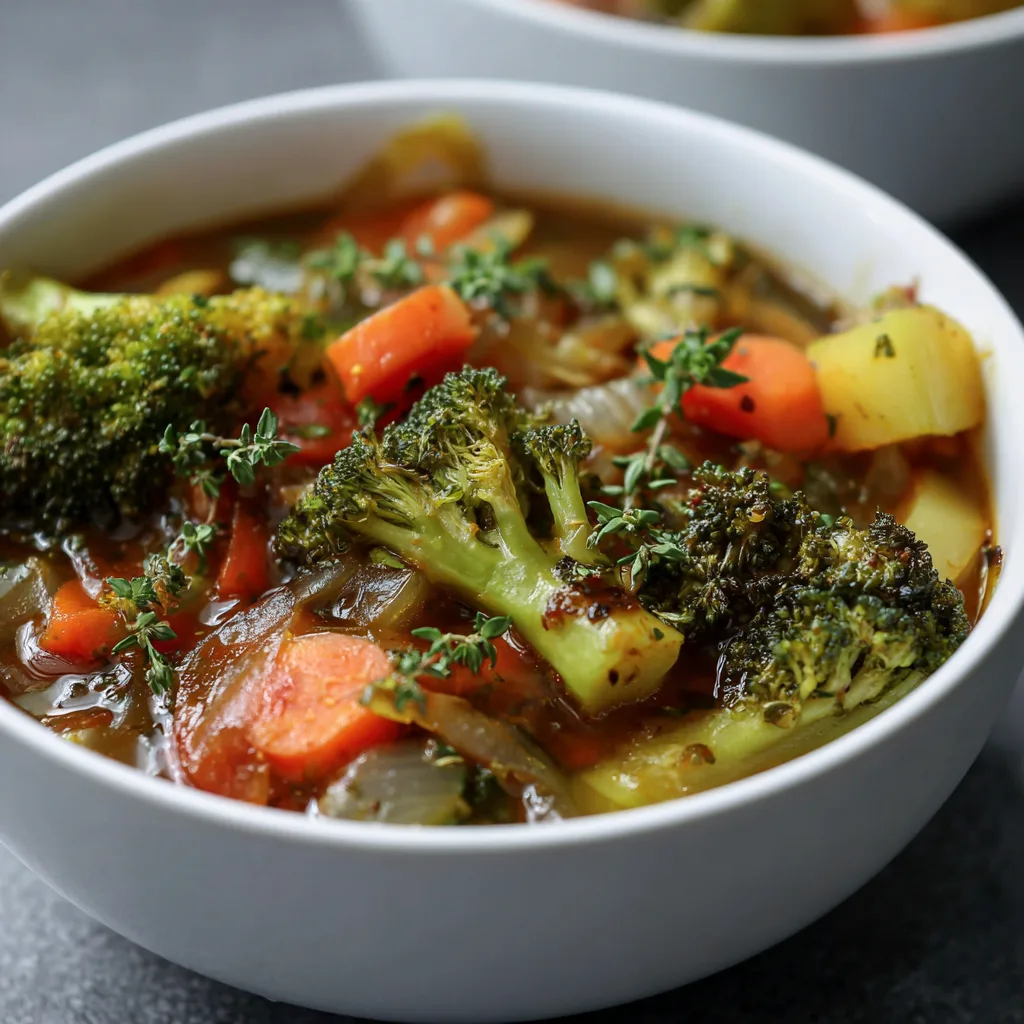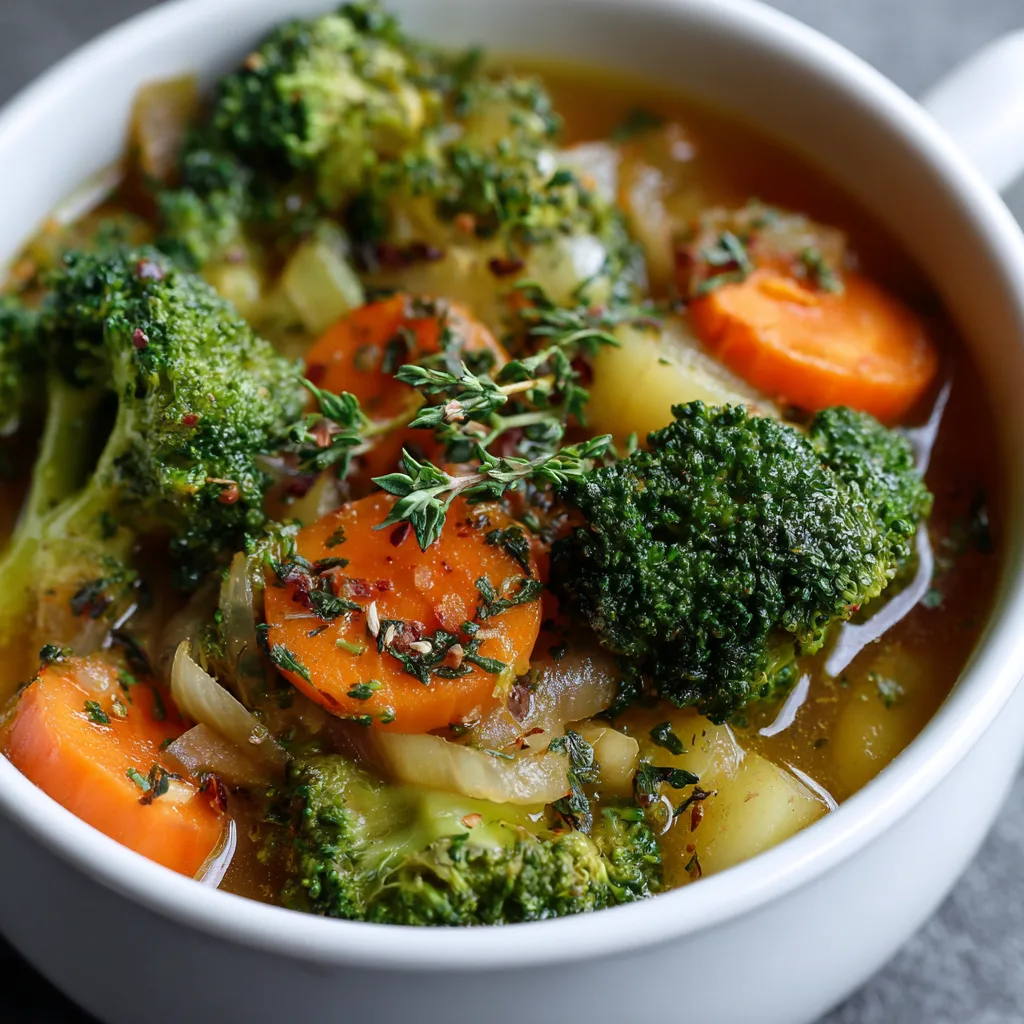Healthy Broccoli Stew – A Nutritious and Delicious Comfort Food
Broccoli stew has steadily gained popularity as a wholesome, satisfying meal. This vibrant dish combines fresh vegetables and rich flavors into a warm bowl of comfort. It offers more than just taste—it’s a powerful source of nutrition that fits perfectly into modern healthy eating habits.
Choosing broccoli stew as a meal means embracing a nutrient-packed option. Broccoli, the star ingredient, is naturally low in calories yet high in fiber and antioxidants. These qualities support digestion, promote heart health, and help fight inflammation. The stew also provides essential vitamins and minerals, making it a complete and balanced choice.
Many people find broccoli stew appealing, including vegetarians seeking plant-based protein and families wanting a simple, nutritious dinner. Health-conscious individuals appreciate its clean ingredients and ability to nourish without excess fat or sugar. Plus, it adapts well to various diets, whether gluten-free, low-carb, or vegan.
This article will explore the many nutritional benefits of broccoli stew, offer practical cooking tips, and provide a step-by-step recipe. By the end, you’ll understand why this dish deserves a regular spot on your menu and how to prepare it easily at home. Whether you’re new to cooking or a seasoned chef, healthy broccoli stew promises to be a flavorful, satisfying meal option that fuels your body and delights your taste buds.
Why Broccoli is a Superfood for Your Health
Broccoli stands out as a nutritional powerhouse packed with essential vitamins and minerals. It provides vitamin C, vitamin K, folate, and potassium, all vital for maintaining bodily functions. Alongside these nutrients, broccoli offers a significant amount of dietary fiber that aids digestion and supports a healthy gut. Moreover, it contains potent antioxidants like sulforaphane, which help protect cells from damage caused by free radicals.
Scientific studies link broccoli consumption to various health benefits. Regular intake can strengthen the immune system, thanks to its rich vitamin C content. Research also suggests broccoli compounds may lower the risk of certain cancers by reducing inflammation and neutralizing harmful agents. Additionally, the fiber in broccoli promotes digestive health by improving bowel regularity and feeding beneficial gut bacteria.
Broccoli plays a valuable role in weight management. Its low calorie count combined with high fiber content helps you feel fuller longer, reducing overeating. Furthermore, the vegetable supports heart health by helping to lower cholesterol levels and regulate blood pressure. These combined effects make broccoli an ideal choice for anyone aiming to boost overall wellness through diet.
Key Ingredients in a Healthy Broccoli Stew
Broccoli pairs wonderfully with a variety of nutrient-rich vegetables. Carrots add natural sweetness and beta-carotene, while potatoes contribute satisfying texture and potassium. Tomatoes bring acidity and antioxidants, and onions and garlic boost flavor while offering immune-supporting properties.
Herbs and spices enhance the stew’s health benefits and taste without extra calories. Turmeric provides anti-inflammatory compounds, thyme supports digestion, and black pepper improves nutrient absorption. These seasonings enrich the stew’s complexity and promote wellness.
Adding protein sources such as beans, lentils, lean meats, or tofu turns the stew into a complete meal. Plant-based proteins like lentils also contribute fiber, making the dish heartier and more filling.
Healthy fats like olive oil not only improve flavor but also aid in absorbing fat-soluble vitamins from vegetables. Olive oil contains heart-healthy monounsaturated fats and antioxidants that support cardiovascular health.
Choosing low-sodium broth or homemade stock significantly impacts the stew’s nutrition. Lower salt content helps manage blood pressure and reduces the risk of heart disease. Homemade stock also delivers natural flavors and nutrients without unnecessary additives, making your broccoli stew as wholesome as possible.
Choosing the Best Broccoli for Stew
Selecting the right broccoli is crucial for a flavorful and nutritious stew. Fresh broccoli offers a vibrant taste and crisp texture. Look for firm stalks with tightly closed, dark green florets. Avoid heads with yellowing or soft spots, which indicate age or spoilage. Store fresh broccoli in the refrigerator’s crisper drawer inside a perforated plastic bag to maintain moisture. Use it within three to five days for the best quality.
Frozen broccoli provides a convenient alternative and is often picked and frozen at peak freshness, preserving nutrients effectively. It requires no washing or chopping, saving prep time. However, frozen broccoli may have a softer texture after cooking, so adjust cooking times accordingly. For stews, frozen broccoli works well when you want a quick, nutrient-rich meal.
Before cooking, trim tough stalks and separate the florets evenly. Rinse fresh broccoli under cold water to remove dirt and debris. For frozen broccoli, simply thaw slightly or add directly to the stew.
Cooking Methods that Preserve Nutrients
How you cook broccoli affects its nutrient content. Stewing gently simmers vegetables, allowing flavors to meld while retaining most nutrients. This method works well for broccoli stew, as it softens the vegetable without excessive nutrient loss.
Boiling can cause water-soluble vitamins like vitamin C to leach into the cooking water. To avoid this, keep boiling times short or use the water as part of the stew broth. Steaming, on the other hand, preserves more vitamins and minerals because broccoli doesn’t come in direct contact with water. However, steamed broccoli lacks the rich flavors developed through stewing.
Slow cookers and pressure cookers offer convenient ways to prepare broccoli stew. Slow cookers maintain low temperatures for several hours, gently cooking ingredients and blending flavors. Pressure cookers shorten cooking times but require careful timing to avoid overcooking broccoli, which can become mushy.
Balancing cooking time is essential. Overcooking broccoli causes a loss of texture and nutrients, while undercooking may leave it tough. Aim to cook broccoli until it is tender but still bright green, usually around 10 to 15 minutes in a simmering stew.
Flavor Enhancements without Extra Calories
Boost the taste of your broccoli stew using herbs and spices instead of calorie-dense additives. Fresh or dried thyme, rosemary, and oregano add earthy notes. Ground turmeric and cumin introduce warmth and depth. Black pepper brightens flavors and enhances nutrient absorption.
Adding acidity brightens the stew’s flavor profile. A splash of lemon juice or a teaspoon of vinegar added near the end of cooking balances richness and enhances freshness without adding calories.
Using homemade broth instead of store-bought versions reduces excess sodium and unwanted preservatives. Homemade vegetable or bone broth enriches flavor naturally and delivers additional nutrients, making the stew wholesome and satisfying.
Variations to Suit Dietary Preferences
Broccoli stew easily adapts to different dietary needs. For vegan and vegetarian versions, use vegetable broth and plant-based proteins such as beans, lentils, or tofu. These additions increase the stew’s heartiness and provide essential amino acids.
Gluten-free eaters can enjoy broccoli stew without modifications if using gluten-free broth and seasoning. Avoid adding ingredients like soy sauce or flour-based thickeners unless certified gluten-free.
For low-carb options, reduce or omit starchy vegetables like potatoes and add extra broccoli, leafy greens, or mushrooms. Including lean proteins like chicken or turkey keeps the stew balanced for those watching carbohydrate intake.
These flexible variations allow you to tailor broccoli stew to your tastes and health goals while keeping it nutritious and delicious.
Boosting Immunity and Fighting Inflammation
Broccoli stew provides powerful antioxidants that help fight inflammation throughout the body. Compounds like sulforaphane neutralize harmful free radicals, reducing oxidative stress that contributes to chronic diseases. This anti-inflammatory action supports overall health and lowers the risk of conditions such as arthritis and heart disease.
In addition, broccoli’s rich vitamin C content strengthens the immune system by enhancing white blood cell function. This boosts your body’s ability to fend off infections and heal faster. Eating broccoli stew regularly offers a natural way to keep your immune defenses strong while enjoying a comforting meal.
Supporting Digestive Health with Fiber-Rich Stew
The high fiber content in broccoli and other stew vegetables plays a vital role in digestion. Fiber adds bulk to stool, which promotes regular bowel movements and helps prevent constipation. It also feeds beneficial gut bacteria, fostering a healthy microbiome linked to improved mood and immunity.
A vegetable-rich stew keeps you feeling full longer due to its fiber and water content. This natural satiety aids weight management by reducing overeating and unnecessary snacking. Incorporating broccoli stew into your diet supports digestive wellness and helps maintain a healthy body weight with ease.
Heart Health and Blood Sugar Regulation
Broccoli and its companion ingredients in the stew contribute to heart health in multiple ways. The fiber helps lower LDL cholesterol levels, reducing plaque buildup in arteries. Antioxidants combat inflammation, which is a key driver of cardiovascular disease.
Moreover, the low glycemic impact of broccoli and non-starchy vegetables helps regulate blood sugar levels. This steadier blood glucose control reduces the risk of type 2 diabetes and supports energy balance throughout the day.
By choosing broccoli stew as a meal, you fuel your body with heart-friendly nutrients that protect against disease. It’s a delicious way to care for your cardiovascular system while enjoying a warm, satisfying dish.
Common Questions from “People Also Ask”
Can I freeze broccoli stew?
Yes, broccoli stew freezes well. To maintain texture and flavor, cool the stew completely before transferring it to airtight containers. Freeze for up to three months. When reheating, thaw overnight in the fridge and warm gently on the stove to prevent overcooking.
How long does broccoli stew last in the fridge?
Stored properly in an airtight container, broccoli stew stays fresh for about 3 to 4 days in the refrigerator. Always check for any off smells or changes in texture before consuming leftovers.
Is broccoli stew good for weight loss?
Absolutely. Broccoli stew is low in calories and high in fiber, which helps you feel full longer. Its nutrient density supports metabolism and reduces cravings, making it an excellent choice for weight management.
Can I use frozen broccoli for stew?
Yes, frozen broccoli is a convenient and nutritious option. It is typically flash-frozen at peak freshness, preserving most nutrients. Add it later in the cooking process to avoid mushiness.
What can I add to make broccoli stew creamier without cream?
To achieve a creamy texture without dairy, blend a portion of the cooked stew or add pureed cauliflower, cooked potatoes, or white beans. These ingredients naturally thicken the stew and add richness.
Is broccoli stew suitable for a low-carb diet?
Broccoli stew can fit a low-carb diet if you limit or omit starchy vegetables like potatoes. Focus on adding more non-starchy veggies and protein to keep carbs low while maintaining flavor.
How do I prevent broccoli from becoming mushy in stew?
To keep broccoli firm, add it toward the end of cooking and avoid over-simmering. Cooking just until tender-crisp preserves texture and vibrant color, improving both appearance and taste.
Healthy Broccoli Stew – Nutritious & Easy One-Pot Meal

A hearty, nutrient-packed broccoli stew filled with fresh vegetables, herbs, and warming spices. Perfect for a wholesome lunch or dinner.
Ingredients
- Fresh broccoli florets (about 4 cups)
- Chopped carrots (1 cup)
- Diced potatoes (1 cup)
- Chopped onions (1 medium)
- Minced garlic (3 cloves)
- Olive oil (2 tablespoons)
- Low-sodium vegetable broth (4 cups)
- Chopped tomatoes (1 cup)
- Dried thyme (1 teaspoon)
- Ground black pepper (to taste)
- Salt (optional and to taste)
- Lemon juice (1 tablespoon)
- Optional: cooked white beans or lentils (1 cup)
Instructions
Notes




